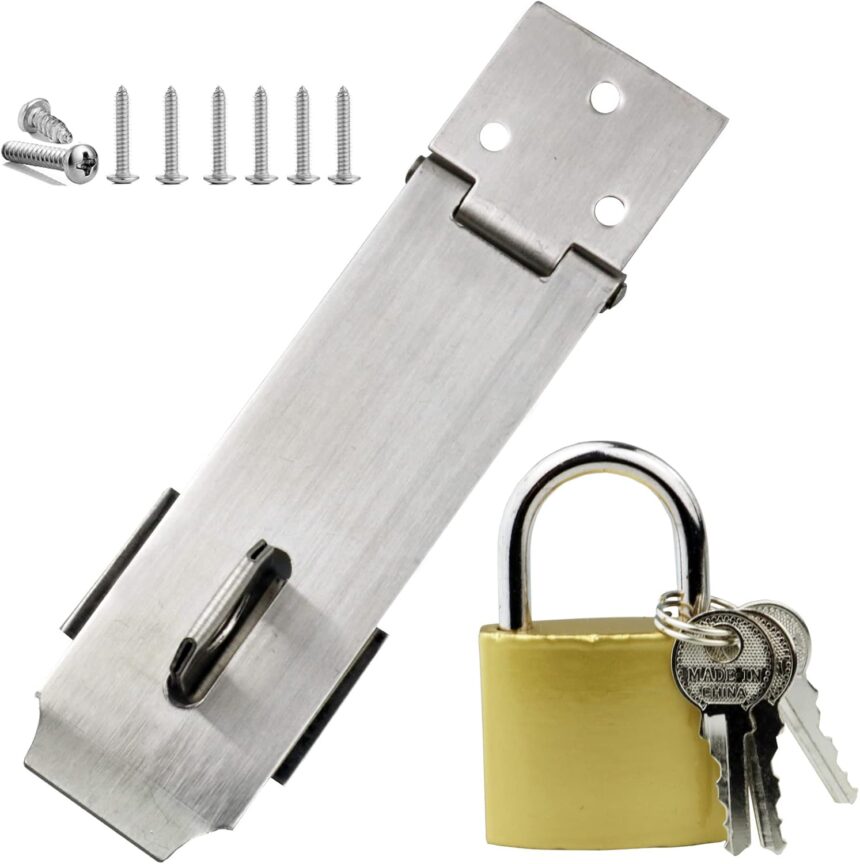Padlocks are simple but effective tools for keeping our belongings secure. However, people often make mistakes that reduce their effectiveness. Understanding these mistakes and how to avoid them can save you from frustration and potential losses. Let’s dive into the most common errors and practical solutions.
Mistake 1: Choosing the Wrong Size
Many people pick a pad lock without considering its size. If the lock is too big, it might not fit the latch or chain. If it’s too small, it’s easy to break.
How to Avoid It
- Measure the shackle diameter of your latch or chain before buying a padlock.
- Choose a lock that fits snugly but leaves little room for cutting tools to reach.
Fun Fact: Did you know that bolt cutters can break small padlocks in seconds? Always choose the right size for better security.
Mistake 2: Ignoring the Lock Material
Not all padlocks are created equal. A basic lock made of cheap metal might corrode in harsh weather or be easy to break.
How to Avoid It
- Use brass or stainless steel locks for outdoor use. These materials resist rust and corrosion.
- Hardened steel padlocks are ideal for high-security needs because they are tough to cut.
Data to Consider: Studies show that weather-resistant locks last 2-3 times longer than non-weatherproof ones in outdoor environments.
Mistake 3: Forgetting About the Key or Combination
How many times have you lost the key or forgotten the combination? It’s a common mistake and one that can cost time and money to fix.
How to Avoid It
- Store spare keys in a safe, memorable location.
- Write down the combination in a secure app or notebook.
- Choose keyless padlocks with biometric or digital unlocking options if you tend to lose keys.
Mistake 4: Using Weak or Flimsy Latches
Even the strongest padlock won’t protect your belongings if the latch is weak. Many people overlook this critical connection.
How to Avoid It
- Inspect the latch or chain before securing it with a padlock.
- Use hardened steel latches for doors, gates, or storage units.
Quick Tip: Chain thickness matters! A padlock attached to a thin chain is an easy target for bolt cutters.
Mistake 5: Leaving the Lock Exposed
Exposing your padlock to weather, dirt, or direct attacks can reduce its lifespan and effectiveness. Rain can cause rust, while freezing temperatures can jam the mechanism.
How to Avoid It
- Cover your padlock with a protective cap or case, especially in outdoor settings.
- Apply a silicone-based lubricant to keep the mechanism smooth and rust-free.
- Use padlocks with weatherproof coatings for added durability.
Mistake 6: Overlooking Security Ratings
Not all padlocks offer the same level of security. Some are designed for light use, while others provide heavy-duty protection.
How to Avoid It
- Check the security rating of the padlock. Many manufacturers grade locks based on cut resistance, impact resistance, and other factors.
- For high-value items, invest in locks with Grade 3 or higher under the ANSI/BHMA standards.
Fact: High-security padlocks can withstand up to 2,000 pounds of force, compared to basic ones that might fail at 200 pounds.
Mistake 7: Using the Same Key for Everything
It’s tempting to use a master key system for convenience, but it increases risk. If someone finds one key, they can access all your locks.
How to Avoid It
- Use different keys for padlocks securing high-value items.
- Opt for padlocks with unique keying systems or anti-pick features.
Mistake 8: Not Testing the Lock Regularly
Many people lock their items and forget about them. Over time, padlocks can rust, jam, or become difficult to open.
How to Avoid It
- Test your padlocks monthly to ensure they function smoothly.
- Clean and lubricate them to prevent dirt buildup or rust.
Pro Tip: If a lock starts to stick, act immediately. A little maintenance goes a long way in extending its life.
Mistake 9: Using Cheap Padlocks for High-Security Needs
Cheap padlocks may save money initially, but they offer little protection. Thieves can pick or break them easily.
How to Avoid It
- For valuable items, spend a little extra on a high-quality lock.
- Look for features like anti-drill plates, hardened shackles, and double locking mechanisms.
Mistake 10: Neglecting Digital Options
Traditional padlocks work well, but digital options offer better convenience and security. Many people stick to old-school locks, missing out on new technology.
How to Avoid It
- Explore smart padlocks with Bluetooth or fingerprint access.
- Use an app-connected padlock for easy tracking and unlocking.
Quick Tips for Padlock Care
- Always keep the lock clean and dry.
- Store spare keys securely but make sure they’re accessible when needed.
- Don’t force a stuck lock—it might break. Instead, use lubricant or seek professional help.
The Numbers Speak
- Over 40% of padlock failures are due to rust or lack of maintenance.
- High-quality padlocks reduce break-in attempts by 30-50%, according to security studies.
Final Thoughts
A padlock is only as good as the way you use it. Avoid common mistakes like choosing the wrong size, ignoring maintenance, or using weak latches. Invest in high-quality locks and take care of them. With a little effort, you’ll keep your belongings safe and secure for years to come.


